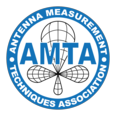Francesco D'Agostino, Flaminio Ferrara, Claudio Gennarelli, Rocco Guerriero, Massimo Migliozzi, October 2017
Among the near-field - far-field (NF-FF) transformations, that with spherical scan [1] is the most appealing due to its feature to allow the whole radiation pattern reconstruction of the antenna under test (AUT). To get a considerable measurement time saving, spherical NF-FF transformations for AUTs with one or two predominant dimensions, requiring a minimum number of NF data, have been developed in [2], by using the nonredundant sampling representations of the electromagnetic (EM) fields [3] and adopting a prolate or oblate ellipsoid to shape the AUT. Another effective possibility to save the measurement time is to make faster the scan by collecting the NF data through continuous and synchronized movements of the probe and AUT. To this end, NF-FF transformations with spherical spiral scan have been recently proposed. They rely on the nonredundant representations and use optimal sampling interpolation (OSI) formulae [3] to effectively recover the NF data needed by the traditional spherical NF-FF transformation [1] from the acquired ones. The nonredundant sampling representation on the sphere from spiral samples and the related OSI expansion have been developed in [4-6] by adopting a spherical AUT model and choosing the spiral pitch equal to the sample spacing needed to interpolate along a meridian. Then, NF-FF transformations with spherical spiral scan for long or quasi-planar AUTs [7] have been obtained by applying the unified theory of spiral scans for non-volumetric AUTs [8]. Unfortunately, due to practical constraints, it is not always possible to mount the AUT in such a way that it is centered on the scanning sphere centre. In this case, the number of NF data required by the NF-FF transformation [1] and the related measurement time can remarkably increase, due to the corresponding grow of the minimum sphere radius. Aim of this work is the development of a fast and accurate nonredundant NF-FF transformation with spherical spiral scan suitable for quasi-planar antennas, which requires practically the same number of NF data both in the centered and offset mountings of the AUT. To this end, an offset mounted quasi-planar AUT is modeled as contained in a oblate ellipsoid, and an effective representation of the probe voltage over the scanning sphere, using a minimum number of samples collected on a proper spiral wrapping it, is developed by applying the unified theory of spiral scans for non-volumetric AUTs [8] in the spherical coordinate system having the origin coincident with the AUT centre at distance from the scanning sphere one. The related OSI expansion allows to accurately reconstruct the NF data required for the NF-FF transformation.
[1] J. Hald, J.E. Hansen, F. Jensen, F.H. Larsen, Spherical near-field antenna measurements, J.E. Hansen, (ed.), London, Peter Peregrinus, 1998.
[2] O.M. Bucci, C. Gennarelli, G. Riccio, C. Savarese, “Data reduction in the NF–FF transformation technique with spherical scanning,” Jour. Electr. Waves Appl., vol. 15, pp. 755-775, June 2001.
[3] O.M. Bucci, C. Gennarelli, C. Savarese, “Representation of electromagnetic fields over arbitrary surfaces by a finite and nonredundant number of samples,” IEEE Trans. Antennas Prop., vol. 46, pp. 351-359, March 1998.
[4] O.M. Bucci, F. D’Agostino, C. Gennarelli, G. Riccio, C. Savarese, “NF–FF transformation with spherical spiral scanning,” IEEE Antennas Wireless Prop. Lett., vol. 2, pp. 263-266, 2003.
[5] J F. D’Agostino, F. Ferrara, J.A. Fordham, C. Gennarelli, R. Guerriero, M. Migliozzi, “An experimental validation of the near-field - far-field transformation with spherical spiral scan,” IEEE Antennas Prop. Magaz., vol. 55, pp. 228-235, Aug. 2013.
[6] F. D’Agostino, C. Gennarelli, G. Riccio, C. Savarese, “Theoretical foundations of near-field–far-field transformations with spiral scannings,” Prog. in Electr. Res., vol. 61, pp. 193-214, 2006.
[7] R. Cicchetti, F. D’Agostino, F. Ferrara, C. Gennarelli, R. Guerriero, M. Migliozzi, “Near-field to far-field transformation techniques with spiral scannings: a comprehensive review,” Int. Jour. Antennas Prop., vol. 2014, ID 143084, 11 pages, 2014.
[8] F. D’Agostino, F. Ferrara, C. Gennarelli, R. Guerriero, M. Migliozzi, “The unified theory of near–field–far–field transformations with spiral scannings for nonspherical antennas,” Prog. in Electr. Res. B, vol. 14, pp. 449-477, 2009.
